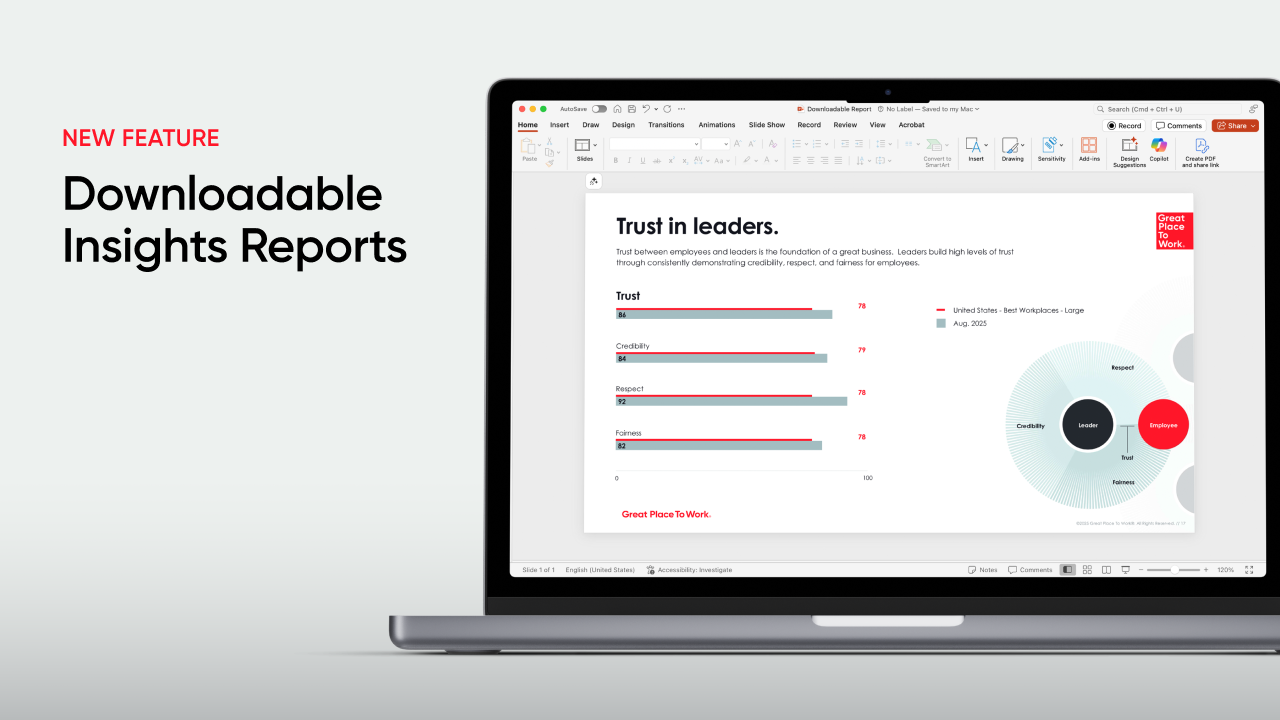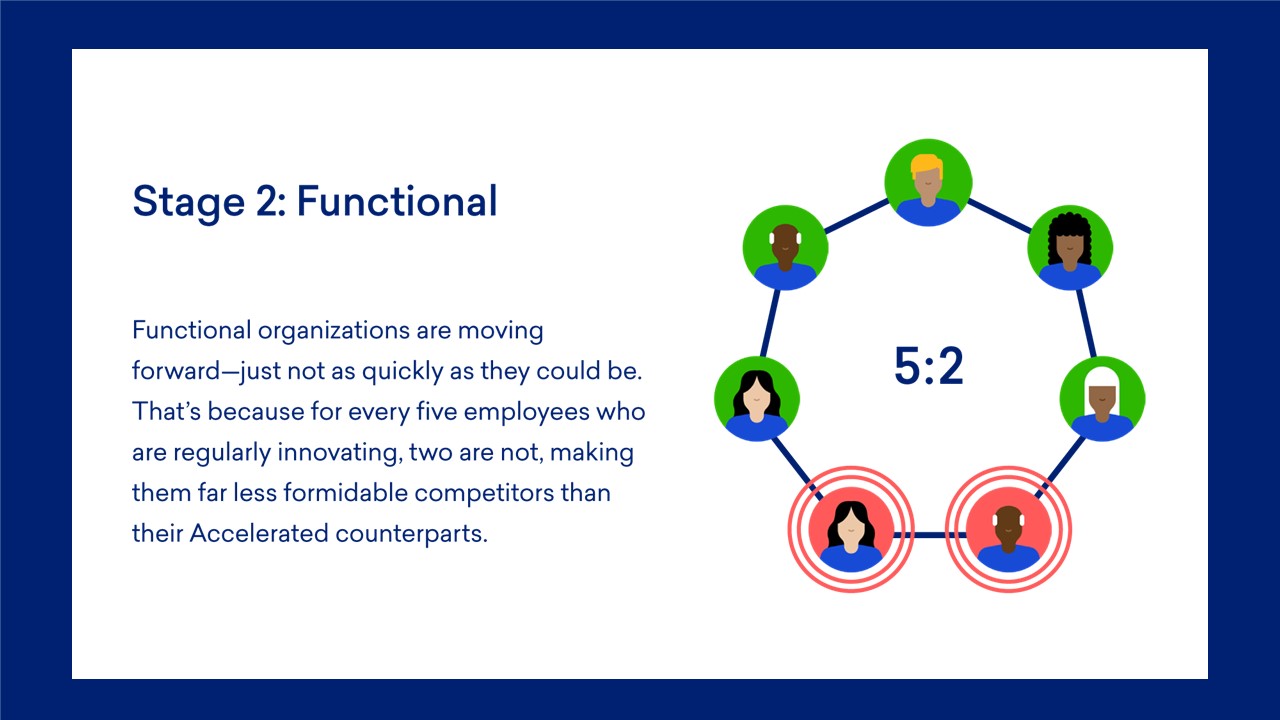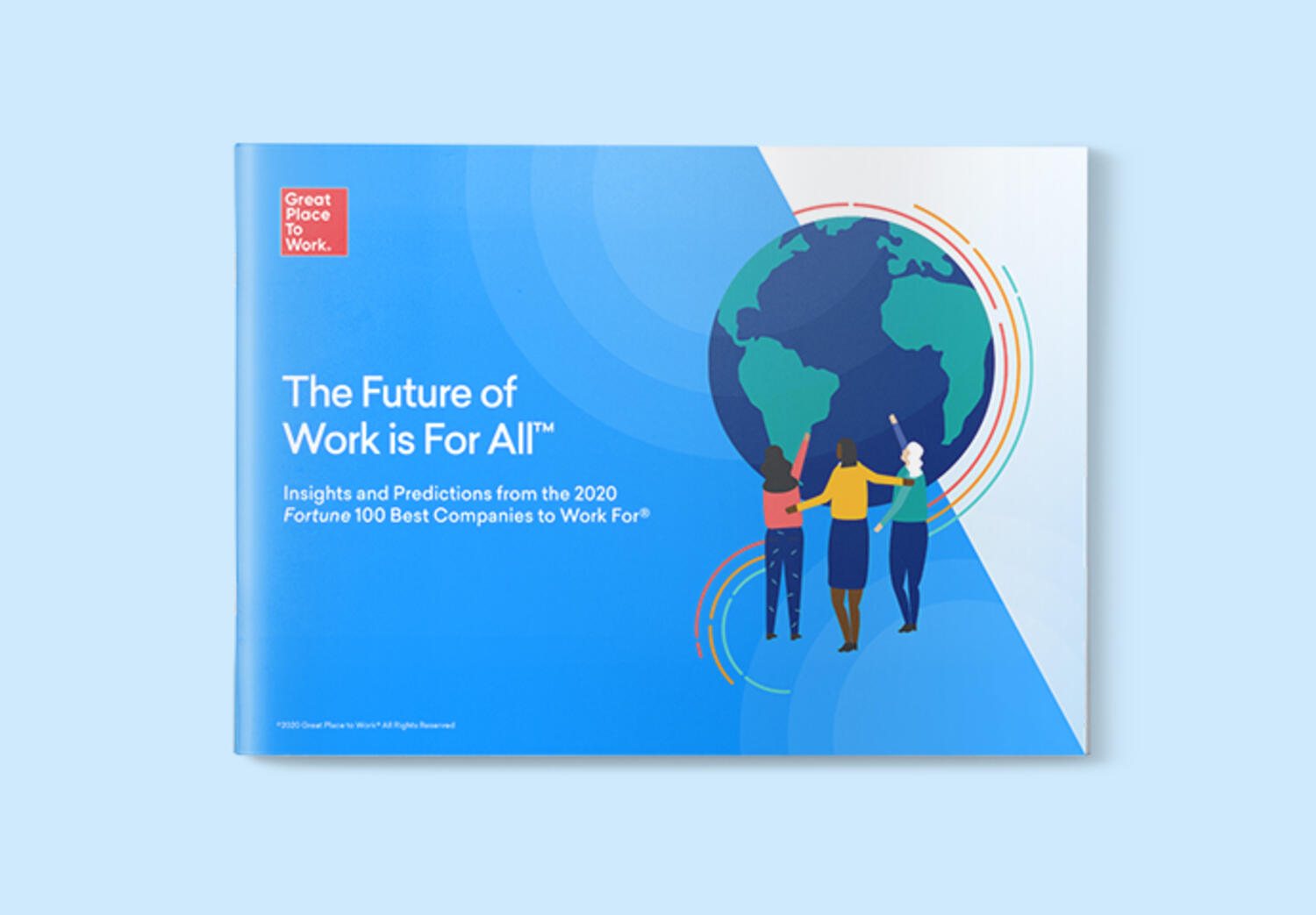
Benchmarks & Trends, Changing company culture, Company Culture, Employee Experience
Effective collaboration can be challenging for organizations of all types – whether you’re a startup with five employees in one office, or a multinational company with 500,000 employees across the globe, strong communication and teamwork is crucial to achieving goals and growing the business.
The definition and nature of teams is changing, adding another layer of complexity to fostering strong collaboration. Teams no longer sit in the same corner of the office, where they can simply walk up to the person they need to talk to. The rise of collaboration tools and cloud technology means work can be done from anywhere at any time, meaning your teammate may be working from home, which may even be on another continent many time zones away. And the natural tendency for organizational silos to form means people that should be talking to each other to solve problems aren’t connecting.
Great workplaces realize the importance of promoting teamwork and encouraging cross-collaboration. While it’s important to recognize the accomplishments of individuals who go above and beyond, the best organizations to work for succeed by bringing people together to accomplish things together in an environment of trust.
Here are some of the ways our Fortune 100 Best Companies to Work For and Great Place To Work-Certified organizations create a culture of collaboration.
Creating personal connections
Effective collaboration is rooted in a sense of trust and care for one another, and great workplaces put effort into connecting people with one another to form strong teams and social networks. At the 2019 Fortune 100 Best Companies to Work For, 86% of employees at the winning organizations said you can count on people to cooperate (versus 74% of employees at non-winning companies), and 91% said people care about each other (versus 82% of employees at non-winners). Forming bonds with colleagues, especially across the company, means employees will feel more comfortable reaching out for help or input on their projects.
As a way to help virtual employees better connect with those who work in the office, HR cloud software company Ultimate Software’s marketing department recently began a collaborative Coffee Chats program. The program pairs an office-based employee with a virtual one (about half of the Marketing department is virtual), and they spend 30 minutes biweekly chatting over coffee. Discussions range from exchanging advice for better productivity and time management to sharing stories about their families and how the employee came to work at Ultimate. As an added component of the program, several Coffee Chat pairs present results from the chats during Marketing’s quarterly all-team meetings.
The company also uses remote-controlled robots with iPads mounted on them to enable their virtual workers to be a more tightly integrated part of onsite collaborative meetings - FaceTime technology projects the virtual employee’s face on the robot’s iPad, enabling face-to-face conversations with others in the remote meeting room.
HR technology company Workday believes making connections is an aspect of their culture that differentiates them from other companies, and that developing robust social networks helps them share information, collaborate more effectively, and support each employees’ growth and development. Their New Connections program is offered to new hires who have been with Workday for a minimum of three months. Half of the day-long get-together is spent exploring the value of connections, how those are reflected in the Workday culture, and how to deepen them as a new Workmate. The second half includes a community project through which team members strengthen existing connections and make new ones externally.
One team-building exercise practiced at construction equipment and services provider Hilti is a “Culture Walk,” which operates like speed dating and is meant to help teams take time to get to know one another. The team goes for a walk and is arranged two-by-two in a line. Each team member has four questions – two personal and two work-related – that they will ask of another person and answer for themselves. During the walk, team members on the right will move up to the next person every five minutes until every team member has had a chance to speak with one another. This activity is meant to ensure that every single team member learns something about their team mates and that they can better work together and understand one another in the future.
Bringing people together to solve problems
Creating opportunities for cross-functional collaboration creates value for not only employees, who will expand their internal networks, but can help organizations solve tough challenges facing the business. In recent years, more and more companies have assembled teams that bring people from across the organization together to brainstorm on issues and leverage their diverse perspectives to come up with new ideas that will benefit the business.
Consulting firm Protiviti hosts a Global Innovation Challenge, to encourage a culture of innovation, build teamwork and solve specific challenges set out by leaders. Each Challenge begins with a question that the leadership team poses, such as "How can Protiviti better serve global clients?" Leveraging their Innovation Champions network, each local office conducts a working session to collaborate on an answer for the question. Ideas generated by the team are logged in the company's internal idea-sharing platform, so the ideas from that local team are listed alongside ideas generated by offices across the globe. The Innovation Task Force leads review submissions to select the Challenge winner. The winning office then receives a coveted Innovation Trophy.
Financial services company Credit Acceptance has Collaboration Teams, groups of team members who gather monthly to share best practices and review existing procedures to identify areas for improvement. The roster for each Collaboration Team is comprised of volunteers who have been in their role for at least six months, and typically consists of one to two team members for each role. To keep new ideas flowing, team rosters change each quarter. Once the Collaboration Teams are formed, each selects a chairperson to facilitate monthly meetings and update a tracking spreadsheet with notes. Recommendations generated in these sessions are reviewed by a supervisor, then presented to a senior leader for approval and resource allocation.
At lender Veterans United Home Loans (VUHL), they host “speed storming” sessions, an idea that came out of their Innovation Games, which are now used across the company in multiple departments. The idea of a speed storming session is to present a topic or question and then allow groups of people to collaborate on as many ideas as possible in a short amount of time. Usually lasting only 20 minutes and focused entirely on one topic, the moderator of the session moves people around so the groups change every five minutes. This keeps the ideas fresh and allows people to flow with new peers. VUHL says these sessions are “brainstorming with a twist.”
Provide platforms where people can connect
Cultures of collaboration are rooted in trust and building relationships, and technology has made it easier for people that are geographically and organizationally dispersed to come together and form bonds. While collaboration platforms are on the rise, the Best Companies have had digital spaces to connect and share information for many years – the actual platforms they use may have changed over time, but the concept of giving people an accessible place to gather and connect has remained the same.
Many of our great workplaces leverage the use of discussion boards where people across the organization can connect around shared interests (personal and professional), as well as hosting idea-sharing platforms, where people can make suggestions and others can upvote and comment on these ideas.
Accenture, a consulting firm, uses its Ideas Platform to engage employees in decision-making and problem solving. The Ideas Platform is an ideation campaign platform for Accenture people to come together to share, discuss and vote on ideas for specific topics and ideas. Campaigns are used to collect ideas from participants. Ideas progress through predefined stages as they make their way toward a campaign's end. For example, a campaign might start with a stage for submitting ideas, and then be followed by one or more stages wherein participants vote for the ideas they like best. The Ideas Platform provides a technology capability for all Accenture people to come together virtually to share regardless of their location or their level—results are inclusive of all input submitted—ensuring that every single voice/thought/opinion/vote is heard. To date, more than 10,000 different campaigns with over 41,000 ideas have been submitted globally.
When you work for a large company, it can sometimes be challenging to figure out where to find answers to random questions or who to bring new ideas to. Cloud technology company Salesforce has an internal Chatter (discussion) group called Who Should I Talk To? where 2,000 Salesforce employees await to answer any question. Think we can improve our benefits messaging? Ask who you can talk to about that, and someone will connect you. Have a great idea for a new product? This group is a great place to connect with the right development team. Who Should I Talk To? enables employees to make connections across the organization and move quickly and efficiently.
Why trust is essential for a collaborative culture
Collaboration hinges on employees’ willingness to come together and achieve goals together, which can only happen in an environment of trust, pride and camaraderie. People need to feel safe to give and receive genuinely constructive feedback, be inspired by a common goal, and have the tools and opportunities to connect with one another. Silos form when people don’t see the value in involving others in their work – diverse perspectives are crucial to coming up with creative solutions. Best Workplaces have many different practices and programs that promote collaboration, but what they have in common is that they believe in the power of coming together to achieve great things as a team.










